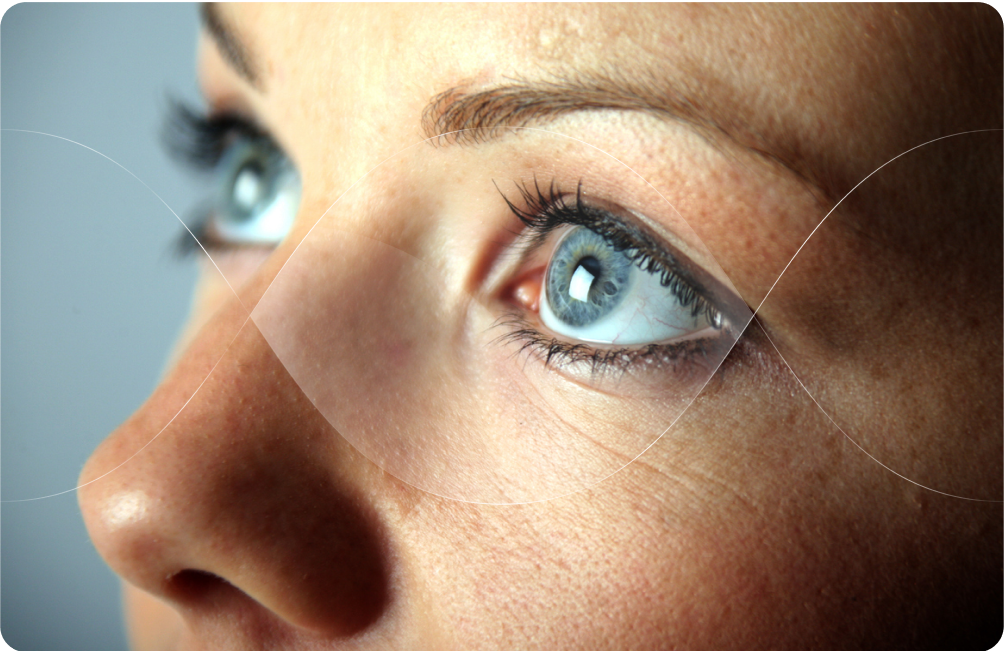Eyeing the future: Genetic insights driving personalized eye care

Over 350 hereditary eye conditions are currently known, collectively affecting around one in every 1,000 people globally. These genetic disorders can influence various parts of the eye, such as the cornea, lens, retina, and optic nerve. Though they differ in their symptoms and severity, they all face a shared challenge: the critical need for early, precise diagnosis and tailored treatments.
Prominent conditions
Fuchs' dystrophy
Fuchs' dystrophy is a degenerative condition caused by deteriorating cells in the cornea - the structure responsible for the refraction of light and protecting the eye from ultraviolet radiation - resulting in blurred or cloudy vision. About 75% of cases in populations with white European ancestry are caused by a specific mutation in the TCF4 gene (emphasizing an urgent need to increase understanding of genetic prevalence in other populations), while variations in the COL8A2 gene have been associated with a rare subtype which occurs in children.
Keratoconus
This condition also affects the cornea and is estimated to affect approximately one in 2,000 people. Keratoconus is a progressive condition which causes the cornea to become thinner and eventually bend outwards into a cone shape. This leads to increased sensitivity to light and blurred and distorted vision. The cause of the condition remains unknown but a family history has been associated with increased risk, indicating that genetics may play an important role.
Congenital cataracts
Congenital cataracts are one example of genetic-linked eye disease which affects babies and young children. The condition impacts the lens, the structure responsible for transmitting and focusing light on the retina, as well as playing a key role in visual focus. A 2021 study estimated that 22.3% of cases could be linked to genetics; to date researchers have linked 115 genes with cataract formation.
Primary congenital glaucoma
Primary congenital glaucoma (PCG) is a genetic subtype of glaucoma (a condition which impacts the optic nerve) and is characterized by presence at birth or early-onset, typically diagnosed within the first year of life. Studies have estimated that up to 87% of familial cases of PCG are linked to genetic variation in the CYP1B1 gene. However, the biological mechanisms by which variations in CYP1B1 contribute to the development of PCG remain unclear.
Myopia
Myopia, or nearsightedness, is one of the most common causes of visual impairment and is influenced by both genetic and environmental factors. More than 400 genetic loci have been associated with myopia and refractive errors, though lifestyle factors, such as excessive near work, also play a role in its onset and progression. There is a notable difference in myopia prevalence among ethnicities, with East Asians experiencing higher rates and greater severity compared to Caucasians. Predicting the progression of myopia to high myopia is important for prevention and early interventions, and current research focuses on gene-environment interactions and developing polygenic risk scores (PRS) for better risk stratification.
Macular degeneration
Age-related macular degeneration (AMD) is a leading cause of visual impairment in the U.S., with limited treatment options for advanced and dry forms. Biomarkers, including genetic markers, offer potential for early detection, progression measurement, and personalized treatment. The best-established AMD risk markers are single nucleotide polymorphisms (SNPs) in the CFH and PLEKHA1/ARMS2/HtrA1 loci. These SNPs account for a substantial fraction of AMD risk and may guide preventive and therapeutic strategies. Inflammatory biomarkers have also been studied as potential indicators, though results vary in their consistency and reliability.
Other genetic eye conditions
Albinism, which commonly affects sight as well as skin pigmentation, and color blindness (one of the world’s most common inherited conditions) are also eye conditions with a strong genetic link.
Why research matters: Impact on vision
All of these conditions cause vision loss or even blindness if left untreated. Early and accurate diagnosis is required to identify the most impactful treatment options, such as surgery, medication, or preventative actions. The correct intervention at the right time can not only help prevent or slow further loss of vision but, in some cases and conditions, contribute to correcting and restoring it.
It’s therefore vital that further research is carried out to identify the biological mechanisms behind conditions where there is a known genetic element, understand the impact of variants across different populations, and significantly increase knowledge of the causes of complex, heterogeneous eye conditions. Without increased knowledge and understanding of genetic eye disease, the speed and accuracy of diagnosis will be restricted and available treatment options will remain limited.
Current research landscape
Current research into genetic eye diseases is strongly focused on identifying specific genetic links and mutations, as well as understanding the causal mechanisms behind them. For example, a study published in April 2024 identified eight new genes linked to Fuch’s dystrophy and, significantly, confirmed the genetic TCF4 association in African, Hispanic, and Latino populations.
In condition areas where the genetic association is more clearly understood, specifically within diseases categorized as Inherited Retinal Diseases (and in the wake of the success of Luxtana in treating Leber Congenital Amaurosis), there has been an increasing number of clinical trials focusing on the development of gene therapies.
For more information, download our whitepaper, "Genetics in focus: Addressing the complexities of genetic eye disease and patient care:"

